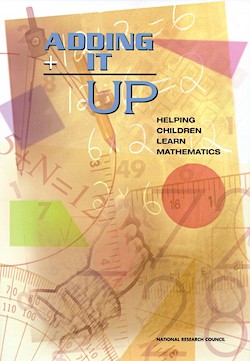Helping Kids Become Math Problem Solvers
By Mona Iehl
 Have you noticed that your students struggle when the math gets tough? Are they quick to put their heads down signaling they’re giving up or just quickly write an answer down without problem solving just to get it over with?
Have you noticed that your students struggle when the math gets tough? Are they quick to put their heads down signaling they’re giving up or just quickly write an answer down without problem solving just to get it over with?
It seems like no matter the encouragement or incentives we use, students are still quick to throw in the towel when faced with a complex math problem.
As teachers we want our students to develop problem solving skills, to really be able to tackle math and to develop the confidence to try multiple strategies. At the same time, most of us are still wrapping our heads around what the three key shifts in Common Core actually look like in our classrooms. Oftentimes we are just not sure what steps we can take to actually help our students build problem solving and reasoning skills.
I have found that when building a math class that promotes problem solving it is essential to embed classroom practices that build a culture of math. When we build a culture, the math classroom has a special feeling, one where everyone holds themselves to high standards and believes that they can achieve.
This doesn’t just happen after a teambuilding activity or even through building relationships with students. Our effort to build a culture of mathematics must be woven into every lesson and intentionally facilitated.
A culture of problem solving
So, you ask, exactly what does all this look like, and how can it help my math students problem solve?
A classroom culture of mathematics is a learning environment where students feel safe and empowered to participate – a physical and emotional space where students’ expressions of ideas and feelings are accepted and used to help facilitate deeper learning and grow problem solving and reasoning skills.
A strong culture can support students and convince them to take the risks needed to learn mathematics. When students are faced with a problem, we want them to experiment and tinker with it, make conjectures, and take the leap to test their ideas.
We want them to feel safe enough and sure enough to make a u-turn when they reach a dead end and adjust their thinking. These attitudes are critical not just when we’re solving math problems – they are key to developing as a thinker in the real world.

SMP identifies skills such as problem solving, a positive disposition, and communication that will help empower students to tackle problems. It is important to remember that these practices are ongoing standards that students will practice and strive for throughout their schooling. They won’t master all these skills in your class this year but will make progress.
Let’s take a look at the first two mathematical practices and think about ways these standards can help us weave in problem solving behaviors that will strengthen our learning culture.
Practice #1- Make Sense of Problems and Persevere in Solving Them
This MPS is all about making meaning of problems and using strategies to solve those problems. When we embed this standard in our classrooms, we are giving students opportunities to slow down to understand the problem and see potential pathways for solving.
Additionally, students can build the skills to monitor their own progress and course correct as they work on their solving. These practices work best when we integrate them into our daily instruction and facilitation moves.
So, what can you do in your classroom to incorporate MPS#1
♦ Give your students opportunities to productively struggle every day. These are not skills that we can tell students to do and expect they will be able to. Instead students need to practice a lot. You’ll want to adopt a lesson structure or routine that allows students to face complex problems and have time to productively struggle – followed by a time to debrief and discuss their takeaways and learn from others. A video example of this process in my class can be found in this MiddleWeb article. I created this video during virtual teaching, but all the principles of productive struggle are present in this 10-minute clip.
♦ Model and share strategies for problem solving. Try using a “think aloud” to narrate your thoughts when faced with a complex problem. It might sound like “Well I don’t know what to do, but I do know there are 56 inches of ribbon; let me draw that. Then I see that it says she cut it into 7 pieces. Hmm… I wonder how I could draw that. Let me think if I’ve ever done this before…” This allows students to see your strategies in action. Another way is to ask students to share strategies they use when they are stuck. Make a chart of the strategies and keep them in the room to refer back to when students find themselves unsure of how to proceed in solving.
♦ Use a routine to help students make sense of the problem. I like to ask students to retell the problem in their own words to a partner. This quick turn and tell a friend strategy helps students think about the context of the problem and what is happening “inside” the problem without relying on key words or tricks.
♦ Before students go off to productively struggle, ask a question as a formative assessment. You could ask “Is the number of chickens more or less than 125 (the first number in the problem)?” or “Will the size of the pieces of ribbon be small or larger than 56 inches?” This allows you to see where students are, and you can tailor your first few conferences with students who appear to not have a first step into solving the problem.
Practice #2 – Reason abstractly and quantitatively
This standard for mathematical practice asks students to make sense of mathematical situations by thinking about the context. This means students can show the context with mathematical symbols and then look at how the symbols relate it to the context.
Often we want students to just “do the math.” But this SMP reminds us that doing math, and achieving standards, mean that students must solve problems in context. One way to do this is by talking about the “story” of the math problem and then representing it with a number sentence (or equation). This helps students begin to reason abstractly and quantitatively about the problem, not just the computation tasks.
So how can you incorporate MPS#2 into your class?
♦ Give students math tasks in a context so they must understand the meaning of the numbers, not just how to compute. Pose one complex word problem to your students each day and ask them to grapple with the problem for just 8 minutes. Then provide time to debrief and discuss the math symbols and computations in the context of the problem.
♦ When students are describing how they solved, ask them to tell “what” and “why,” saying what did you do and why did you do it. These prompts help students relate their mathematical moves back to the context of the problem.
♦ Ask students to name the answer in a sentence that answers the problem’s question. Whenever students give you a response to a word problem, ask them to write an answer sentence. Putting their answer in context helps them attend to the meaning of the quantity.
♦ Expect students to write a number sentence that matches the problem to communicate their understanding of the connection between the mathematical context and the symbols. If students are solving a problem like “There are some apples in the basket when we started picking apples. We picked 38 apples. When we got home, we counted the apples in the basket and there are 62. How many apples were in the basket before we picked apples?” Students would write a number sentence to match that looked like __ + 38 = 62. This shows that students can represent the context of the word problem with symbols and builds their reasoning skills.
Making problem solving the norm
Problem solving is no easy feat for the students or the teachers in classrooms. Incorporating practices in our daily lessons can help build a culture where problem solving is the “norm.” Through simple shifts in our classroom facilitation, students will see that the culture in your classroom is one that is safe to take risks, describe “in progress” thinking, revise ideas, and persevere in solving.
When the culture of taking risks and knowing we’ll make mistakes is strongly present in your math classroom, you’ll see that problem solving isn’t a thing on a page we have to do, but instead problem solving is who we are as young mathematicians – it’s how we do things here.
Mona Iehl (@HelloMonaMath) is a fifth- and sixth-grade math teacher in Chicago, Illinois. Mona started her 14-year year teaching career in the primary grades but found her home in the middle grades six years ago. For more details about her teaching methods, visit her website and see her other MiddleWeb posts here. Mona recently took her passion for helping teachers and students find their inner mathematician to a podcast. Listen in at @HonestMathChat.


































